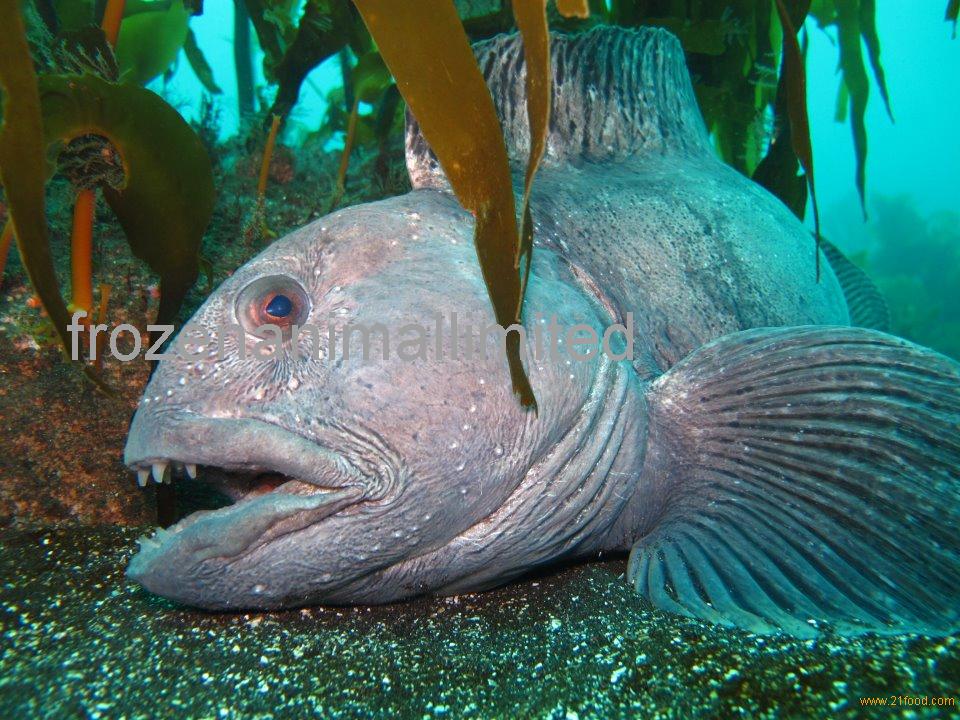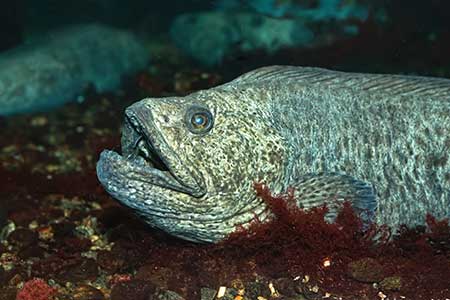
Wolf fish facts skin#

The loss of rocky habitats and underwater caves due to activities such as bottom trawling threatens the Atlantic wolffish’s survival. The fish is a popular target for commercial and recreational fishing, and its slow growth rate makes it vulnerable to overfishing. The Atlantic wolffish faces several threats, including overfishing and habitat loss. Once the eggs hatch, the male protects the young until they can fend for themselves. The male guards the eggs until they hatch, which can take up to three months. However, for the Atlantic wolffish, fertilization occurs internally. How this slow-growing fish fertilizes its eggs sets it apart from other fish-many females despot their eggs in the open ocean for their males to fertilize. The Atlantic Wolffish feeds on invertebrates like clams, mussels, crabs, sea urchins, and other crustaceans Its diet includes crabs, lobsters, clams, sea urchins, and other bottom-dwelling creatures.Īs we’ve already pointed out, the fish’s teeth are specially adapted to crush the shells of its prey. The Atlantic wolffish is a carnivorous fish that feeds on various prey, including crustaceans, mollusks, and other fish. It is also a slow-moving fish that relies on camouflage to avoid predators. The Atlantic wolffish is a solitary fish that spends most of its time hiding in caves or crevices. However, this species is more commonly found at depths ranging from 300 to 600 feet. You can find it at depths of up to 1,200 feet. The Atlantic wolffish is a cold-water species found in the North Atlantic Ocean that prefers rocky bottoms and areas with underwater caves and crevices. Its powerful jaws, rows of sharp teeth, cylindrical body, and ability to blend with its surrounding make it a fearsome predator in its habitat. So, the Atlantic wolffish has a formidable appearance, making it stand out from other fish species.

The Atlantic wolffish is distinctive for its elongated cylindrical body and broad head with large jaws This unique fish species uses dorsal fin spines to defend itself against predators and to help it move along the ocean floor. The anterior part is tall and spiny, and the posterior is shorter and soft. Instead, they are arranged in rows, each with one or two large teeth.Īnother outstanding characteristic of the Atlantic wolffish is its dorsal fin. Its teeth are not arranged in a conventional pattern like other fish species.

This fish has large, powerful jaws filled with sharp, pointed teeth capable of crushing the shells of its prey. It is a striking feature of the Atlantic wolfish worth our attention here.

We’ve talked about the unique teeth of this species. However, most specimens are smaller than this. Besides, the fish can grow up to 5 feet (1.5 meters) and weigh as much as 40 pounds (18kg). Its skin is smooth and slimy, typically grey or brown, with darker blotches or stripes. It has a large, broad head that tapers to a slender body, giving it a cylindrical shape. As we’ve already seen, the Atlantic wolffish has a distinctive appearance.


 0 kommentar(er)
0 kommentar(er)
